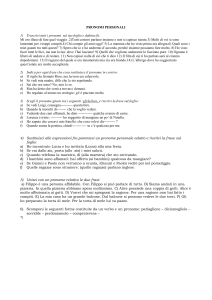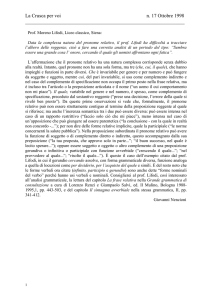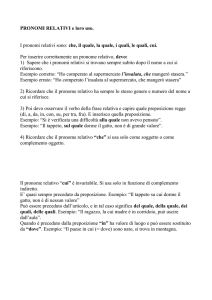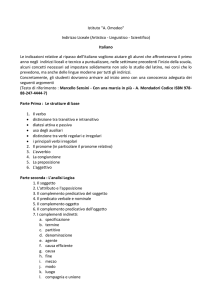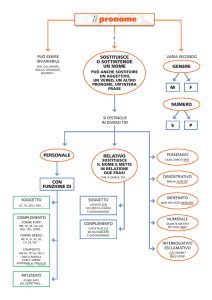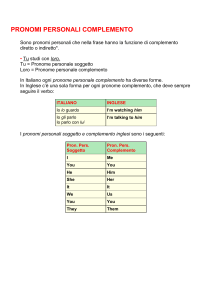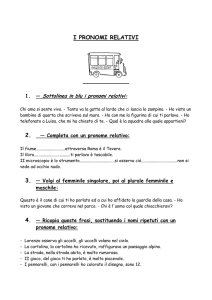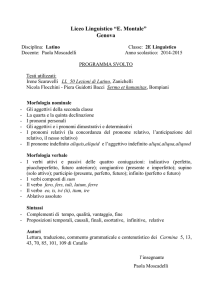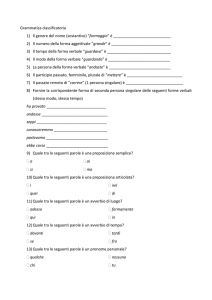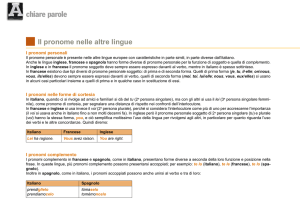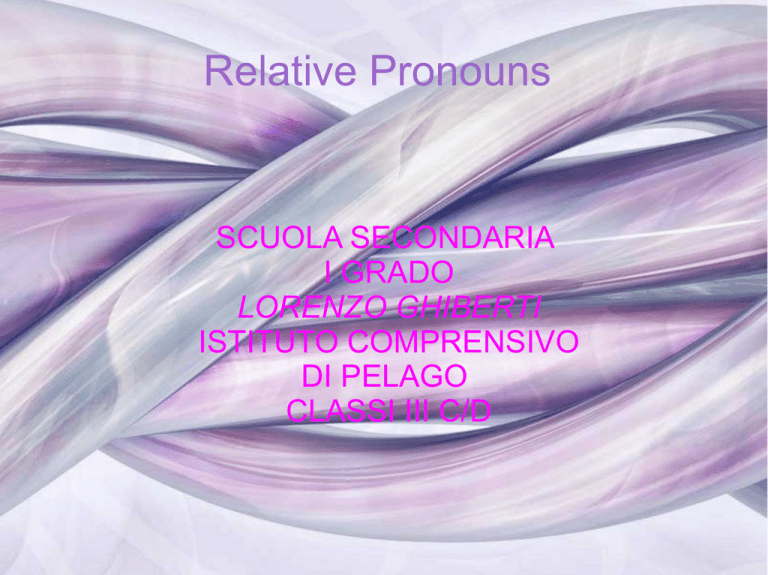
Relative Pronouns
SCUOLA SECONDARIA
I GRADO
LORENZO GHIBERTI
ISTITUTO COMPRENSIVO
DI PELAGO
CLASSI III C/D
Relative Pronouns
I pronomi relativi si usano per
collegare due frasi evitando di ripetere
un nome o un pronome. La prima
frase di solito è una proposizione
principale.
La
seconda
frase,
introdotta dal pronome relativo, si
chiama proposizione relativa.
Relative Pronouns
●
Si usano i pronomi relativi who/that per le
persone.
Ann's the new student. She started school last
week.
Ann's the new student who/that started school
last week.
The film is about young people. They live in the
UK.
The film is about young people who/that live in
the UK.
Relative Pronouns
●
Si usano i pronomi relativi which/that per le
cose e gli animali.
This is my new computer. I bought it secondhand.
This is my new computer which/that I bought
second-hand.
She's got a rabbit. It lives in the garden.
She's got a rabbit which/that lives in the garden.
Relative Pronouns
Il pronome relativo può essere il soggetto
o il complemento oggetto della frase
relativa.
He is the boy who helped me.
↓
soggetto
Quando il pronome relativo è soggetto va
sempre espresso.
Relative Pronouns
Quando il pronome relativo è
complemento oggetto spesso
viene tralasciato. E' comune dire:
He is the boy (who) I helped.
Relative Pronouns
Soggetto
Complemento
oggetto
Persone
Who/that
Who/that/
nessun
pronome
Cose o
animali
Which/that
Which/that/
Nessun
pronome
Ecco uno schema
riassuntivo.
Relative Pronouns
Attenzione
Esiste anche il pronome complemento
oggetto whom usato nel linguaggio
formale.
I know the man whom she married.
Relative Pronouns
Quando i pronomi relativi sono usati con una
preposizione, la preposizione va posta dopo il
verbo.
He's the man. You talked to him on the phone.
He's the man who/that you talked to on the
phone.
Anche in questo caso è possibile omettere il
pronome relativo.
Who is the girl (who) you were with?

